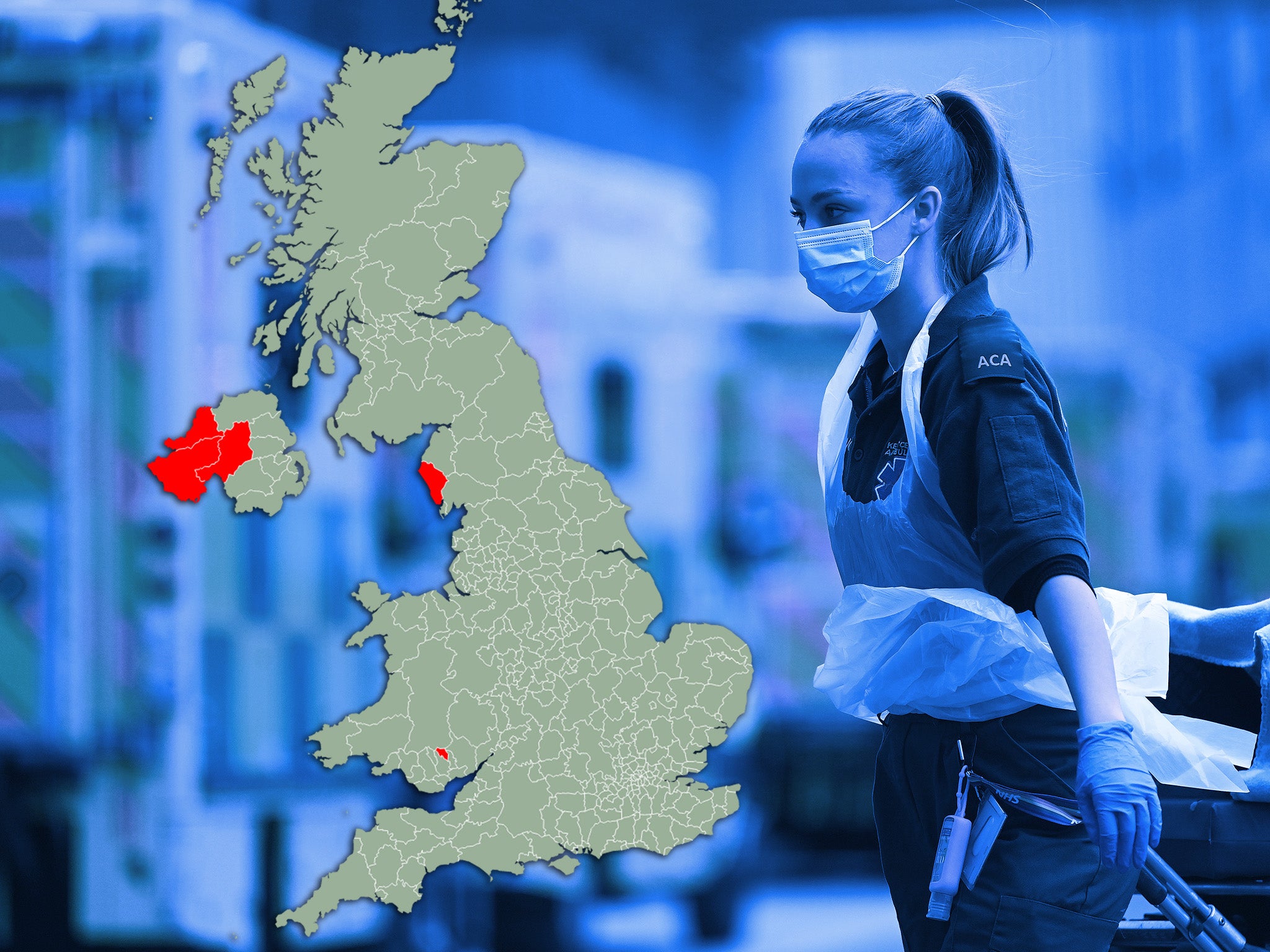UK Covid hot spots with fastest growing infection rates revealed
Record numbers of people suffering long Covid, new statistics suggest

Your support helps us to tell the story
From reproductive rights to climate change to Big Tech, The Independent is on the ground when the story is developing. Whether it's investigating the financials of Elon Musk's pro-Trump PAC or producing our latest documentary, 'The A Word', which shines a light on the American women fighting for reproductive rights, we know how important it is to parse out the facts from the messaging.
At such a critical moment in US history, we need reporters on the ground. Your donation allows us to keep sending journalists to speak to both sides of the story.
The Independent is trusted by Americans across the entire political spectrum. And unlike many other quality news outlets, we choose not to lock Americans out of our reporting and analysis with paywalls. We believe quality journalism should be available to everyone, paid for by those who can afford it.
Your support makes all the difference.Two areas of Northern Ireland have the UK’s highest rates of coronavirus among their populations, new figures show.
An overwhelming majority of local areas in the UK recorded a week-on-week rise in rates – 345 out of 377 – or 92 per cent. Only 32 (8 per cent) have experienced a fall in numbers.
Nearly 195,000 people – a near-record – tested positive for coronavirus in the latest 24 hour recording period, continuing the sharp upward trend since the emergence of the Omicron variant.
Derry City and Strabane has the highest proportion among the population, with 6,680 new cases in the seven days to 1 January, the equivalent of 4,420.6 per 100,000 people. This is up from a rate of 1,624.7 new cases per 100,000 for the week leading up to Christmas Day.
Fermanagh and Omagh in Northern Ireland has the second highest rate, with 4,119 new cases, up from 1,283.5 to 3,510.4 cases per 100,000.
Copeland in Cumbria has the third highest rate, up from 1,336 to 3,076.1 new cases per 100,000 of the population, with 2,093 new cases.
Blaenau Gwent has the highest rate in Wales, at 2,937.7, up from 766.9 the week before, and Inverclyde has the highest rate in Scotland, at 2,587.6, up from 1.218.5 per 100,000 people.
The soaring incidence of Covid is placing exceptional strain on the NHS, with 24 hospitals in England declaring critical incidents because of the number of medical staff being forced to isolate.
MPs on the Commons Health and Social Care Committee have warned the pandemic has had a “catastrophic” impact on waiting lists, and the wave of the Omicron variant is exacerbating an already “serious staffing crisis” the government is failing to address.
At the same time, figures from the Office for National Statistics suggest about 1.3 million people in the UK – one in 50 – are likely to be suffering from long Covid, the highest number since estimates began.
This includes more than half a million people who first had Covid-19, or suspected they had the virus, at least one year ago.
Transport secretary Grant Shapps defended the government’s decision to not go further than plan B restrictions for England.
“We are always trying to find the right compromise on going too tight on restrictions – lockdowns, let’s face it, they have a lot of costs connected,” he added.
Cabinet ministers this week reportedly discussed denying entry to large venues and the right to quarantine-free travel to those who refuse to get a booster jab.
In Northern Ireland, Stormont ministers are meeting to discuss the latest Covid-19 surge.
The ambulance service there says a quarter of its staff are unavailable to work.
No further restrictions are expected to be agreed at the virtual meeting but Stormont ministers are expected to discuss the enforcement of strengthened rules on face coverings.
In Scotland, health secretary Humza Yousaf has said the NHS faces “really difficult decisions” in the coming weeks as bosses at NHS Greater Glasgow and Clyde urged people not to go to accident and emergency departments unless their condition was “very urgent or life-threatening”.
The five UK areas with the biggest week-on-week rises in infections are:
- Derry City and Strabane (up from 1,624.7 to 4,420.6 per 100,000 people)
- Fermanagh and Omagh (1,283.5 to 3,510.4)
- Blaenau Gwent (766.9 to 2,937.7)
- Copeland (1,336.0 to 3,076.1)
- Mid Ulster (1,062.1 to 2,715.0)

Join our commenting forum
Join thought-provoking conversations, follow other Independent readers and see their replies
Comments